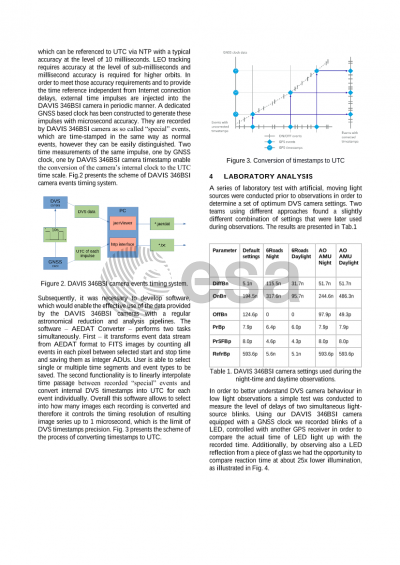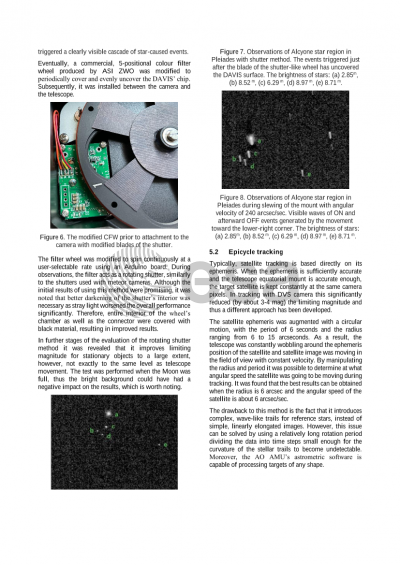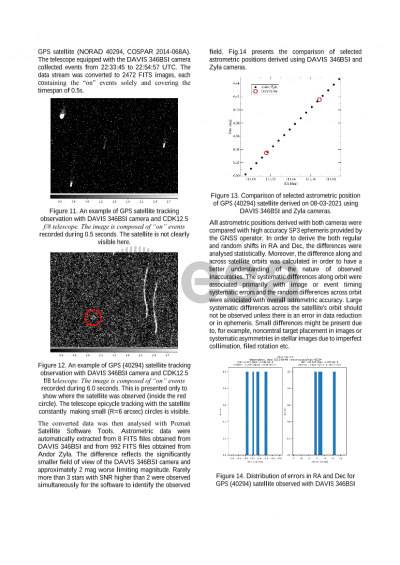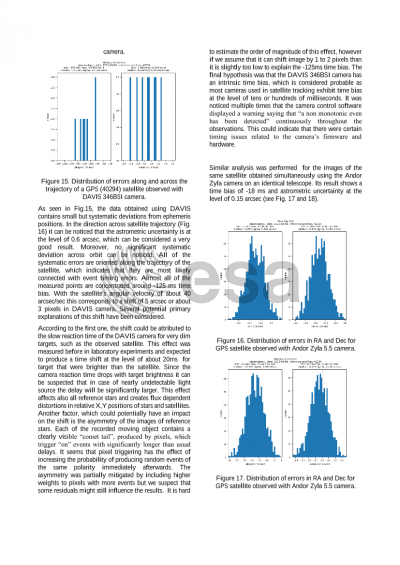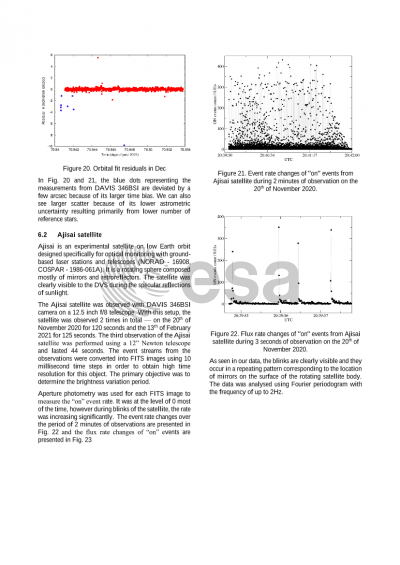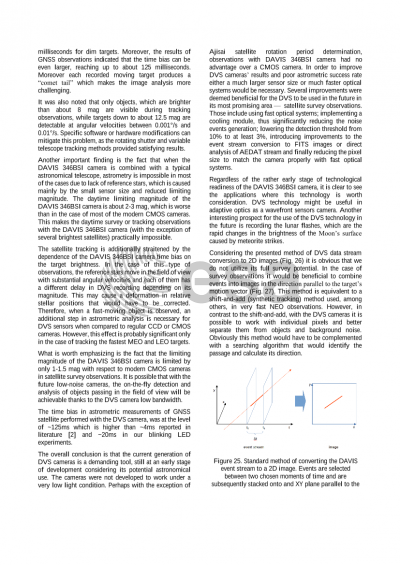Document details
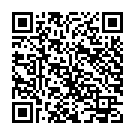
Abstract
The Dynamic Vision Sensor (DVS) technology, which could potentially be utilized in various SST activities, has been the subject of our research over the last several months. This type of camera records from each pixel an asynchronous stream of events of brightness variation changes, rather than integrated intensity recorded simultaneously over selected exposure time. Due to its novel approach to visual data retrieving and processing, DVS needs evaluation as a potential tool in the SST domain. Initial evaluation procedure of several observational modes has been conducted, with emphasis on nighttime tracking of GNSS satellites. The key parameters considered in our studies are the camera’s timing accuracy and astrometric precision. We present the world’s first astrometric measurements of satellites observed with a DVS camera performed on a number of GNSS (GPS, Galileo) satellites. Furthermore, a series of observations of principally GEO and MEO, but also LEO, targets was conducted. Satellites were observed with a few different optical assets to evaluate DVS camera’s performance in different configurations. A whole observing system and reduction pipeline has been developed, including dedicated GNSS clock for event timestamping and dedicated software capable of converting DVS data stream from native AEDAT format to a series of FITS images.
Preview

